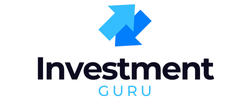For buyers shopping in expensive housing markets, a standard mortgage often isn’t enough. That’s where jumbo loans come in. These loans are designed for amounts that exceed the conforming loan limits set by Fannie Mae and Freddie Mac, making them essential for financing luxury homes or properties in high-cost areas. But since they’re larger and riskier for lenders, jumbo loans come with stricter rules—especially when it comes to the down payment.
In 2025, most lenders require a minimum down payment of 10–20% for jumbo loans, depending on the borrower’s credit profile and overall financial picture. While some highly qualified borrowers may find options closer to 10%, many lenders lean toward 20% or more to reduce risk. Compared to FHA or conventional loans with lower thresholds, this can mean bringing tens of thousands of extra dollars to the table.
The down payment is only part of the equation. Borrowers also face higher credit score requirements—often 700 or above—to secure approval. Lenders also review debt-to-income (DTI) ratios, typically expecting them to stay at or below 43%. In addition, many require cash reserves, sometimes covering six to twelve months of mortgage payments, to ensure you can handle the loan long term.
Another key difference with jumbo loans is that they don’t follow standard federal guidelines. Each lender sets its own rules on loan amounts, required reserves, and documentation, so shopping around is critical. A strong credit score, solid income, and a larger down payment will give you more negotiating power when it comes to securing the best rates and terms.
In this article, we’ll explain the minimum down payment and key rules for jumbo loans in 2025, including credit, income, and reserve requirements. Whether you’re eyeing a luxury property or simply buying in a high-cost area, knowing the rules upfront will help you prepare and improve your chances of approval.
Table of Contents
What Is a Jumbo Loan?

A jumbo loan is a type of mortgage that exceeds the conforming loan limits set annually by the Federal Housing Finance Agency (FHFA). Conforming loans can be purchased by Freddie Mac and Fannie Mae, while jumbo loans remain in the lender’s portfolio, often leading to stricter qualification rules.
In 2025, the FHFA conforming loan limit is expected to rise again due to housing market inflation. For single-family homes in most areas, the limit is generally projected to be around $750,000 (final numbers will be released by FHFA in late 2024). Any mortgage above that falls into the jumbo category.
Because they carry higher risks for lenders, jumbo loans come with detailed underwriting requirements—making it important for borrowers to prepare financially before applying.
Jumbo Loan Minimum Down Payment in 2025
The jumbo loan minimum down payment in 2025 is expected to remain between 10% and 20%, though this number is highly dependent on the lender, property type, and your personal credit profile.
| Property Price | Typical Minimum Down Payment (2025) | Total Cash Needed |
|---|---|---|
| $850,000 | 10% – 20% | $85,000 – $170,000 |
| $1,200,000 | 15% – 20% | $180,000 – $240,000 |
| $2,000,000+ | 20% – 30% | $400,000 – $600,000+ |
The down payment percentage increases the higher the property’s value climbs. Some lenders offer 10% down jumbo loans, but these often come with stricter terms, higher interest rates, or mandatory private mortgage insurance (PMI).
Other Jumbo Loan Rules for 2025
- Credit Score: Most lenders require at least a 700 credit score, with 720+ preferred.
- Debt-to-Income Ratio (DTI): Typically under 43%, though stricter lenders want 36% or lower.
- Cash Reserves: Some lenders ask for 6–12 months of mortgage payments in savings.
- Full Documentation: Expect multiple years of W-2s, tax returns, and bank statements.
- Appraisals: Jumbo loans often require 2 appraisals rather than one.
Lenders evaluate jumbo loans carefully because they cannot be sold to Fannie Mae or Freddie Mac. Strong credit, verified income, and sufficient assets are critical for approval.
Why Lenders Enforce Bigger Down Payments
Lenders want to minimize risk. By requiring more money upfront, borrowers are less likely to walk away in case of financial strain. Larger down payments mean smaller loan balances, reducing default exposure.
The bottom line: the size of your down payment can significantly influence the interest rate offered. A 20% down payment can often lower rates by as much as 0.25%–0.50% compared to putting only 10% down.

Jumbo Loan vs. Conventional Loan
Here’s a quick comparison between conforming/conventional loans and jumbo loans in 2025:
| Feature | Conventional Loan | Jumbo Loan |
|---|---|---|
| Loan Limit (2025) | Up to ~$750,000 | Above $750,000 |
| Down Payment | 3% – 20% | 10% – 30% |
| Credit Score Minimum | 620 | 700+ |
| DTI Range | Up to 50% | 36% – 43% |
| Reserves Required | 0–2 months | 6–12 months+ |
How to Qualify for a Jumbo Loan in 2025
- Check your credit score. Make sure it’s above 700, and pay down high credit card balances before applying.
- Save aggressively. Prepare at least 15%–20% of the home’s purchase price.
- Reduce overall debt. Lower your DTI ratio before applying.
- Document income. Gather 2 years of tax returns, W-2s/1099s, and pay stubs.
- Shop multiple lenders. Rates and requirements vary; use mortgage comparison tools to find the best offer.
Best Lenders for Jumbo Loans in 2025
Several banks and credit unions specialize in jumbo financing. These include Wells Fargo, Chase, and regional credit unions. Online mortgage platforms also offer jumbo mortgage matching tools. Each lender will have unique down payment rules and reserve requirements, so comparing options is essential.
Consult the Investopedia jumbo loan guide and the Federal Housing Finance Agency website for authoritative updates.

Cost of Jumbo Loan Setup
Beyond the down payment, buyers should budget for setup costs including:
- Loan origination fees: 0.5% – 1% of loan amount
- Appraisals: May cost $750 – $1,500 (double-appraisal required in some cases)
- Closing costs: 2% – 5% of the loan
- Reserve requirements: At least 6 months of mortgage reserves in savings
These costs can push upfront cash requirements well above 25% of the purchase price. Buyers should calculate total cash-on-hand before making offers.
Pros and Cons of Jumbo Loans
Advantages
- Ability to finance homes above conforming limits.
- Competitive interest rates, often similar to conforming loans for well-qualified borrowers.
- Flexibility in loan structures (fixed vs. ARM).
Drawbacks
- Higher down payment requirements.
- Stricter credit score and documentation rules.
- Greater financial exposure if home values decline.
Jumbo Loan Alternatives in 2025
If you don’t have enough for the minimum jumbo down payment, consider:
- Piggyback loans: 80/10/10 structures using a second mortgage to avoid jumbo financing.
- Adjusting home price: Purchasing slightly under conforming loan limits.
- Saving longer: Building assets to afford a 20% jumbo down payment.
FAQs on Jumbo Loans Minimum Down Payment 2025
- What is the jumbo loan minimum down payment in 2025?
It typically ranges from 10% to 20%, but most borrowers should prepare 20% for competitive rates. - Can I get a jumbo loan with 10% down?
Yes, but only selected lenders allow this. You may face higher rates or PMI requirements. - Does the jumbo loan down payment differ for investment properties?
Yes. Investment properties often require 20%–30% down, higher than primary residences. - Do jumbo loans require mortgage insurance?
Some lenders require PMI with down payments under 20%. Others may waive this but offset it with higher interest rates. - What credit score is needed in 2025 for a jumbo loan?
Most lenders require 700+, though 720 is the safer threshold for broad approval. - Are jumbo loan interest rates higher in 2025?
Rates are typically close to conventional loan rates but can be slightly higher due to increased lender risk. - Do jumbo loans have PMI like FHA loans?
They don’t have government-required PMI, but lenders may impose private mortgage insurance if the down payment is low. - How many months of reserves do lenders ask for?
Expect to show 6–12 months of mortgage payments in savings or liquid assets. - Is income documentation stricter for jumbo loans?
Yes. Lenders request multiple years of returns, pay stubs, and often CPA letters for self-employed borrowers. - Will FHA or VA loans cover jumbo amounts in 2025?
FHA and VA loans don’t cover jumbo balances. Jumbo financing is strictly private lending territory.
Conclusion
In 2025, jumbo mortgages remain crucial for buyers in luxury markets and high-cost areas. The jumbo loan minimum down payment 2025 is generally 15% to 20%, though some lenders advertise as low as 10%. Strong credit, documented income, and robust cash reserves are non-negotiable. If you’re planning to purchase a property above conforming loan limits, start early by saving aggressively and improving your credit profile. The more you bring to the table, the better your rate and terms will be.
Action step: Compare jumbo loan lenders online today, calculate your needed down payment, and create a savings plan to secure your dream home in 2025.


